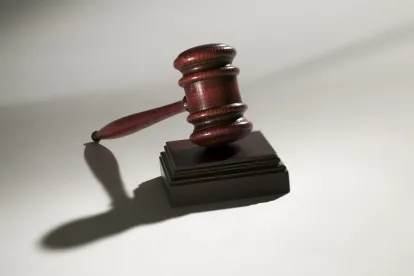On Monday and Tuesday of this week, the United States Court of Appeals for the Seventh Circuit issued a series of decisions addressing the Article III standing of consumer plaintiffs alleging violations of the Fair Debt Collection Practices Act (“FDCPA”). The court—in five opinions resolving six different appeals arising out of putative class actions—revisited the Supreme Court’s decision in Spokeo, Inc. v. Robins, 136 S. Ct. 1540 (2016), clarifying how an FDCPA plaintiff must allege and prove an “injury in fact” sufficient to establish subject-matter jurisdiction in a federal court.
Two of the five opinions resulted in converting Rule 12(b)(6) dismissals of complaints for failure to state a claim to Rule 12(b)(1) dismissals for lack of subject-matter jurisdiction: Larkin v. Finance Sys. of Green Bay, Inc., Nos. 18-3582 & 19-1557 (7th Cir. Dec. 14, 2020); and Gunn v. Thrasher, Buschman & Voelkel, P.C., No. 19-3514 (7th Cir. Dec. 15, 2020). A third opinion vacated a summary judgment order in favor of the defendant on the merits with an instruction to dismiss the case for lack of Article III standing: Brunett v. Convergent Outsourcing, Inc., No. 19-3256 (7th Cir. Dec. 15, 2020).The fourth decision vacated summary judgment for the plaintiff and directed the district court to dismiss for lack of subject-matter jurisdiction: Spuhler v. State Collection Service, Inc., No. 19-2630 (7th Cir. Dec. 15, 2020). Finally, in its fifth opinion, the Seventh Circuit ruled that, although the plaintiff’s complaint adequately pleaded an Article III injury, factual challenges had called the existence of subject-matter jurisdiction into question, and the court remanded for further evidentiary proceedings: Bazile v. Finance Sys. of Green Bay, Inc., No. 19-1298 (7th Cir. Dec. 15, 2020).
All five opinions were unanimous, with eight of the Seventh Circuit’s current nine active judges joining at least one of the decisions (Judge Hamilton did not sit on any of the panels).
This rapid-fire set of opinions highlights for defendants the importance of carefully scrutinizing FDCPA plaintiffs’ allegations regarding their alleged injuries and testing them through appropriate factual challenges throughout the progression of a case.
Background
The FDCPA has become a hotbed of class action litigation activity in recent years. Consumer protection attorneys routinely monitor debt collection efforts for any potentially false or misleading statements or failures to comply with the statute’s strict disclosure requirements. While the precise facts vary slightly among the cases recently decided by the Seventh Circuit, each arises out of debt collection letters sent to consumer debtors.
In Larkin, the plaintiffs alleged the defendant debt collector violated Sections 1692e and 1692f of the FDCPA by making false, deceptive, or misleading representations regarding the plaintiffs’ need to take action to preserve their credit ratings. Homeowners who fell behind on their HOA fees alleged in Gunn that the defendant violated various subsections of Section 1692e by threatening to bring a foreclosure action. The plaintiff in Brunett contended that a debt collection letter violated Section 1692e(5) & (10) because it stated that the creditor might report a release of indebtedness to the Internal Revenue Service. Finally, the Spuhler and Bazileopinions dealt with debt collection letters that lacked adequate disclosures regarding interest accrual, in violation of Sections 1692e(2), 1692f, and 1692g(a)(1).
Key Takeaways
Reading the Seventh Circuit’s decisions together, a number of important points become apparent:
- A plaintiff’s burden of proof grows as the case progresses. As recognized in Larkin, at the pleading stage plaintiffs need only allege facts demonstrating that (1) they have suffered an injury in fact; (2) that is fairly traceable to the defendant’s conduct; and (3) is likely to be redressed by a favorable judicial ruling. Spuhler, however, explains that after a defendant has raised a factual challenge to standing “the plaintiff must supply proof, by a preponderance of the evidence or to a reasonable probability, that standing exists.” Even if the case survives an initial motion to dismiss, a district court must resolve factual disputes relating to jurisdiction, if necessary by holding an evidentiary hearing (as demonstrated by the Court’s opinion in Bazile).
- Intangible harms, while cognizable for Article III standing, are more difficult for plaintiffs to establish. The opinion in Larkin, written by Chief Judge Sykes, makes clear that, although Congress may “identify and elevate historically non-cognizable intangible harms to the status of cognizable injuries,” the legislature’s actions in this respect are merely one data point for the court to consider. Because “Congress cannot override the case-or-controversy requirement” in Article III, a “bare procedural violation” of a statute is not sufficient to establish an injury-in-fact, as the Supreme Court held in Spokeo.
- The Seventh Circuit does not distinguish between “procedural” and “substantive” statutory violations. In Larkin, Gunn, and Brunett, the plaintiffs all attempted to distinguish the Seventh Circuit’s earlier decision in Casillas v. Madison Avenue Associates, 926 F.3d 329 (7th Cir. 2019), on the ground that a “substantive” statutory violation automatically gives rises to a cognizable injury, even if a purely “procedural” violation does not. In all three cases, the Seventh Circuit expressly rejected this distinction as immaterial for purposes of evaluating standing. Larkin held that “[a]n FDCPA plaintiff must allege a concrete injury regardless of whether the alleged statutory violation is characterized as procedural or substantive.”
- FDCPA plaintiffs must tie the alleged statutory violation to a concrete injury inflicted upon them as a result. Throughout its opinions, the Seventh Circuit reiterated that a plaintiff must demonstrate “that the statutory violation harmed him or presented an appreciable risk of harm to the underlying concrete interest that Congress sought to protect.” The court, as part of distinguishing the deficient allegations before it, provided a series of examples of possible injuries that might meet this standard (e.g., violations that caused a plaintiff to pay a debt he did not owe; misstatements that led a plaintiff to pursue a suboptimal financial strategy; false assertions that deterred a plaintiff from entering into a subsequent transaction). But the Seventh Circuit rejected the plaintiff’s claims in Spuhler because they failed to adduce evidence “that the allegedly missing information from the letters affected [their] response to them or [their] debts.”
- Allegations of “confusion” or “annoyance” are insufficient, standing alone, to establish an Article III injury. Brunett, written by Judge Easterbrook, highlighted that, while a debtor may be injured if the confusion created by a misleading or false debt collection letter led him to take some action to his detriment, “the state of confusion is not itself an injury.” Gunn, also written by Judge Easterbrook, further explained that, while spam text messages, phone calls, and faxes might cause “a forbidden invasion of privacy” sufficient to prove a concrete Article III injury, a plaintiff’s mere “annoyance” with having received a legitimate debt collection letter is not enough. In this regard, the Seventh Circuit will not give weight to conclusory labels: “Attaching an epithet such as ‘intimidation’ to a letter does not show that injury occurred. Talk is cheap, but where’s the concrete harm?”
***
The FDCPA decisions handed down by the Seventh Circuit this week go a long way in clarifying the Article III standing analysis in similar statutory-based putative class actions. Industry participants and lawyers (on both sides of the class action bar) should review these opinions to better understand the Constitutional requirements for a cognizable statutory violation capable of being brought in a federal court.




 />i
/>i

